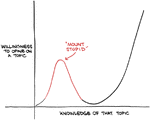Rafael Najmanovich
Mame
This tree:
View attachment 252630
Is all about “balance”. Every shoot has equal energy as every other shoot. All the needles are short. 3/4 inch. No cut needles. Every pad is dense, with thriving interior growth.
None of this happened by accident. This was accomplished by decandling at the proper time, in the proper manner with the strong areas of the tree repressed so that the weaker sections of the tree would be as strong as the strong sections at the end of the season. This was done with varying the length of the stubs of the remaining candle when decandling, and by pulling needles.
Did you talk about that? No.
Now, I understand that JBP is probably too cold tender to use in Montreal. So, it would make sense that you limit your discussion to the species that you, personally, work with.
I don’t grow Mugo. So I don’t tell anyone how they should treat them. Vance does, so I defer to his expertise. I don’t do tropicals. So I don’t tell anyone how to do them, either. My teacher does, though. I’ve heard him tell countless people how to do this or that with them. But since I don't do them, I don’t want to try to pretend I’m an expert, because I’m not. You, however, are pretending to be an expert because you have watched a video or two.
Adair, This tree is technically very good. And yes, absolutely yes, I spoke about how to distribute energy and manage growth in JBP being a multi flush pine species starting at 2:37 (

